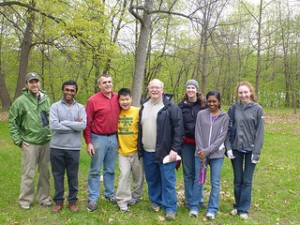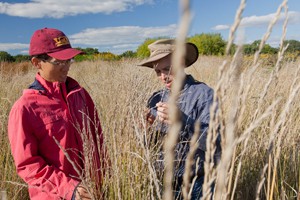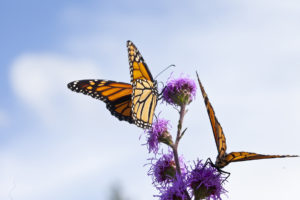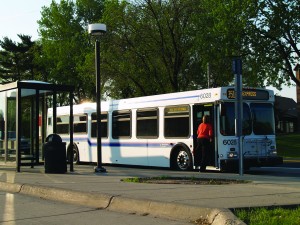Minnesota’s Great Outdoors is more than just the beautiful natural spaces, clean lakes, prairie lands and forests. It’s about the health and vitality of our people and communities.
The coalition members of the Minnesota Environmental Partnership believe that economic prosperity and environmental stewardship are not mutually exclusive. They go hand in hand. Our state’s growth and prosperity have been driven by our heritage of plentiful clean water. Agriculture, business, and recreation have all grown because of the fertile ground our clean water has nurtured. Minnesotans want to protect that legacy and leave a healthy future for their children and their children’s children to reap the same rewards.
But our natural resources don’t just take care of themselves. It takes strong, common sense environmental laws and policies to ensure the purity of our drinking water and sustainability of our groundwater, and create safe and healthy cities, towns and communities to live, work, and play.
As the 2017 Minnesota Legislature convenes, our lawmakers will consider many opportunities to make our state even better, including protecting our Great Outdoors. We call upon our representatives from every corner of our state to listen to your constituents and work to preserve Minnesota’s treasured way of life.
Over the years, the Minnesota Environmental Partnership and our member organizations have fought for laws that promote clean energy, and strengthen protections for our land, water, and air. We have also vigorously opposed short-sighted efforts to block, undermine, and undo those laws. Such efforts are out of step with the wishes of the voters of Minnesota. In accordance with the values of Minnesotans, we will continue to defend existing laws from being weakened or repealed. These include:
- Clean Energy: Minnesota is a national and global leader in our use of renewable energy sources. Our progressive energy policies increase our use of renewable energy sources, provide incentives to promote energy efficiency, and help us achieve our goal of reducing Minnesota’s carbon pollution 80% by 2050. This includes maintaining a moratorium on the construction of new nuclear reactors and coal plants.
- Minnesota Environmental Policy Act: Minnesotans overwhelmingly want to maintain our state’s environmental review standards, which protect our communities and our Great Outdoors from avoidable harm caused by poorly thought-through projects and decisions.
- Plentiful and Clean Water: Minnesota’s clean water laws and standards are essential to eliminating pollution, restoring and protecting our lakes, rivers, streams, wetlands, and groundwater. It is through these laws and standards that our state can avoid waste and over-use that imperils our quality of life and economic prospects.
MEP member organizations are also standing together and asking our Legislature to move forward on the following innovative solutions to some of the biggest challenges facing our Great Outdoors.
Forever Green Forever Clean
Clean water is a core Minnesota value. Smart investments in promising solutions will protect and restore our water quality for all to enjoy.
Unfortunately, on any given weekend this summer, more than 4,600 of Minnesota’s lakes and streams are “impaired,” some no longer deemed safe for swimming or fishing. Nitrates in groundwater from excessive fertilizer use exceed safe-drinking water standards.
The agricultural economy in Minnesota that has stemmed from the fertile land in Minnesota is essential to our way of life, but it is also impairing our water quality. Dominated by summer-annual crops such as field corn and soybeans, row crops soak up most of the nutrients available to them during the production season. But the active production season of row crops is just a few months of the year. The rest of the year the fields are barren and inactive. Without active plant root systems to hold soil in place and absorb water, fields are much more vulnerable to wind and water erosion and nutrient run off. Six out of seven (86%) of water quality impairments in Minnesota are caused by excess nutrient run off.

Research associate Xiaofei Zhang and agronomy professor Jim Anderson are part of the team working on a perennial wheatgrass variety that could give wheat growers additional options.
To resolve this, we must diversify our landscape beyond our heavy reliance on summer annual row crops, to a next generation of agricultural that utilizes substantially more continuous living cover, while providing a good economic return for farmers.
Ongoing funding for long-term research on the development of high-efficiency smart cropping systems is required. Since 2014, the Legislature has provided one-time funding to the University of Minnesota’s Forever Green Initiative, which has been effective in the first stages of developing Minnesota’s next generation crops, such as perennial crops like Kernza and pennycress. Not only do perennial crops prevent runoff into lakes, rivers and streams with their long root systems, they also improve soil quality by replenishing their own nutrients and don’t require expensive fertilizers. Key to this program’s success, however, is ongoing funding to do the necessary research over multiple growing seasons.
To reach our clean water future we must provide long-term funding to advance the University of Minnesota’s Forever Green Initiative, accelerating the development of economically viable cover crops and perennial crops that enhance water quality, soil health, and habitat while providing an economic return for farmers.
Protect Our Pollinators
One in three bites of food we eat relies on pollinators, like honey bees, native bees, monarchs and other insects, and birds. They are responsible for the reproduction of 90% of all flowering plants. But in Minnesota, and across the nation, our pollinators are in decline. Over 2014-2015 alone, Minnesota beekeepers lost more than 50% of their colonies, and Minnesota’s 400 native bee species may be similarly threatened including the Rusty Patched bumble bee, Bombus affinis.
Multiple factors are contributing to pollinator losses:
- Pesticides: Many pesticides are toxic to pollinators, and neonicotinoid insecticides (or neonics) are known to be a driving factor of pollinator decline. At high doses, neonics can kill bees, butterflies and songbirds outright. At lower doses, neonics damage pollinators’ navigation, reproduction, communication, and immune systems.
- Habitat loss: Pollinators need flowering plants throughout the growing season. Native bees and butterflies require safe places to nest. Monarch butterflies need abundant milkweed to mature and reproduce. Decreased plant diversity in rural and urban areas, fragmentation and destruction of native habitat, encroachment of invasive plants, and increased use of herbicide-resistant crops have reduced the amount of high-quality habitat that pollinators need to survive.
- Diseases and parasites: Pollinators become more vulnerable to parasites and diseases when subjected to stressors like pesticide exposure and poor nutrition.

The monarch butterfly is one of Minnesota’s important pollinating species. photo by laurieschneider.com
In August 2016, Governor Dayton released an Executive Order with a comprehensive plan to protect pollinators. This was issued at the same time as the Minnesota Department of Agriculture “Review of Neonicotinoid Use, Registration, and Insect Pollinator Impacts in Minnesota.” If implemented well, the new rules would make Minnesota a national leader in protecting pollinators.
However, the Executive Order and MDA’s proposed steps need additional legislative action to fully address the problem. Unfortunately, while neonics are primarily used as coatings on seeds for crops like corn and soy, the MDA does not have the authority to regulate the sale and use of pesticide treated seeds. That means that the most significant use of these bee-harming pesticides is not monitored or regulated by MDA — including almost all corn seed and 20% of soybean seed. This loophole is a major contributor to pollinator decline.
Minnesota has the opportunity to be a national leader in protecting our pollinators and their contributions to our food system and agricultural economy. We need to close the loophole that allows seed coatings, such as neonics, to be exempt from pesticide rules. We will seek to:
- Tackle the problem of neonicotinoid-treated seeds in Minnesota by:
- authorizing Minnesota regulatory agencies to track and regulate pesticide seed treatments just as they regulate other pesticide applications
- increase funding for research and outreach on the efficacy of neonicotinoid seed treatments
- setting state targets for reducing use of neonicotinoid seed coatings
- Fund ongoing pollinator conservation activities by assessing a fee on sales of pesticides known to harm pollinators.
Statewide Investment in Transportation Options
Minnesota’s transportation system has been neglected for too long. Increased investment is urgently needed to expand public transportation, to create safe bicycling and walking options, and to fix aging roads and deficient bridges.
Our current transportation system harms our economic competitiveness and quality of life, makes it difficult for people in communities of all sizes to access jobs and other critical destinations, and reinforces long-standing racial disparities and income inequality.

Buses and other transit options, as well as safe biking and walking routes are essential to making a complete transportation system for every Minnesotan.
Transportation also generates 25% of the carbon pollution in Minnesota, second only to the power sector. Air quality is often worst near areas with bad traffic and congestion, creating an increase in asthma attacks and a variety of other health problems. Research shows that communities of color are exposed to nearly 40 percent more air pollution than white residents, putting them at higher risk for these adverse health effects. Demand is growing for transportation options that are more affordable, more efficient, healthier, and less resource intensive.
- Building out the metro region’s public transportation system would save $185 to $395 million in reduced emissions.
- Bus transit produces 33% less carbon pollution per passenger mile than the average single-occupancy vehicle.
- Inadequate funding is the biggest challenge faced by 94% of Greater Minnesota transit providers.
- In the Twin Cities metro area, only 8% of jobs are reachable by transit in 60 minutes.
- More than 50 communities across Minnesota have unfunded Main Street enhancement projects, and statewide in 2013 MnDOT received proposals for nearly four times as many Safe Routes to Schools projects as it could fund.
- Minnesota’s roads are in poor condition, costing the average motorist $396.25 per year in extra vehicle repairs and operating expenses.
It is time for the Minnesota Legislature to pass balanced, comprehensive transportation funding that addresses these urgent needs. Increasing long-term statewide investment in all modes of transportation—bus, rail, bicycling, walking, roads, and bridges—will pay valuable health and environmental dividends, spur economic development, and support communities where everyone has equal access to opportunity. These investments can and should positively impact the people who have struggled the most during the recent Great Recession—communities of color, the elderly, low-income families, and people with disabilities.